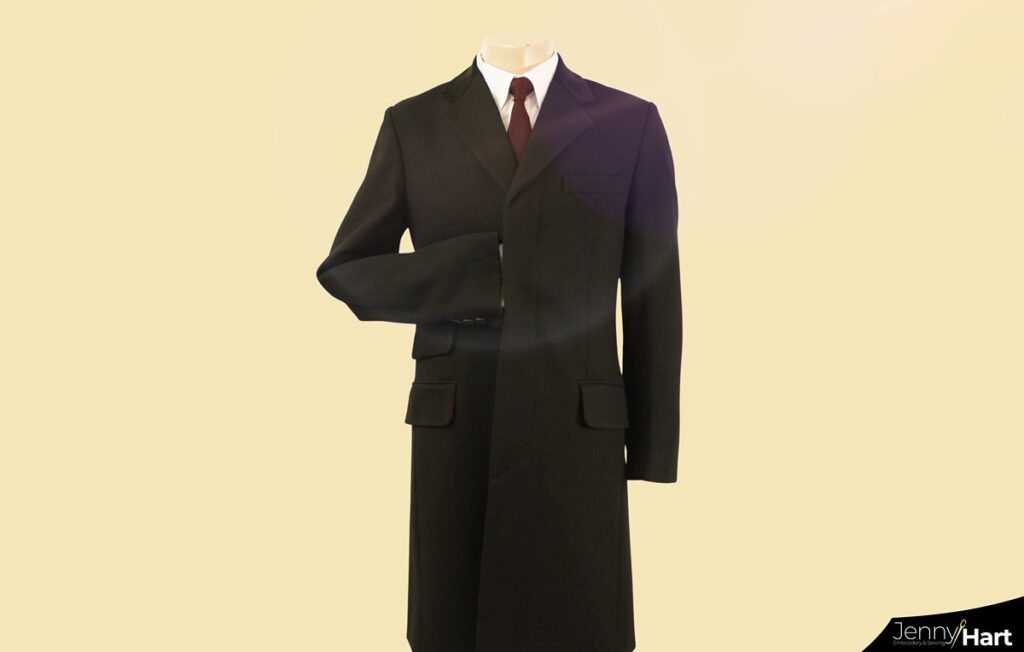During the cold season in most parts of the world, you need some type of coat, and most likely you re-use your coat throughout a few cold seasons. Let’s face it, coats, especially high-quality ones can be on the expensive side and you don’t want to be buying a new one every season.
But even if you are buying a new one every year, the sizes most retailers carry don’t fit all body types. Sometimes the sleeves are too long, the torso is too wide, the shoulders look unflattering, and so on. This can also be the case with your old coats, maybe you lost or put on weight, or maybe you grew a few inches, no matter the case it is best to get your coat tailored and there are a few ways to do this.
Key Takeaways
- Depending on the fabric it’s made of, most coats can be tailored to a certain degree.
- If you need to cut or sew it is best to take your coat to a professional tailor.
- You can go down 1 or 2 coat sizes by making alterations.
- You can make simple alterations at home.
What types of coats can be tailored?

Most coats can be tailored, however, there are a few exceptions that make it difficult to alter a certain type of outwear. If you want to tailor your ski jacket or your puffer that may prove difficult, however, these types of jackets have buttons, zippers, and belts on them so they are made to be adjustable.
On the other hand, coats that can be easily tailored are:
- Overcoats
- Trench coats
- Pea coats
- Wool coats
- Raincoats
- Quilted coats
All of these types of coats have specific features and are handled differently, so it is best to get them professionally tailored.
What type of alterations can be done on a coat to make it fit better?

One of the most common alteration requests is the sleeve area and this can be altered fairly easily. Most of the time is the sleeve length that is the problem.
If the sleeves are too long, there is no problem with shortening them, however, making them longer can be an issue. In this case, you might want to get a bigger size coat and tailor it down all around. Also if your sleeves are too wide, there is no problem making them tighter, the opposite might prove difficult, so again, get a bigger size. (See whether a tailor can make pants bigger or if he can also make dresses bigger)
Some people may struggle to find the right coat to fit them in the shoulder area and they rely on tailoring. However, the shoulders are tricky to alter, especially on well-constructed coats. Try to find a coat that fits you in the shoulder area first and then do the other alterations based on that.
A way you can alter your coat at home is by adding buttons and belts. This is fairly easy to do at home especially if you have a heavy-duty sewing machine. A regular sewing machine might struggle to piece through the fabric if your coat is thick and heavy.
To be fair you can sew buttons by hand with no problem. If you want to make your coat fit tighter just move the buttons a bit to the outer side and there you have it. If you don’t want to do any sewing you can always just add a belt and make your coat tighter.
You can even try to find a fabric that matches and sew on belt buckles on the waistline. This is a very fun way to customize your coats and make them stand out by mixing and matching.
How many sizes down can a coat be altered?
Usually, a coat is tailored down one size. Of course, you can ask your seamstress to tailor it down a bit more, however, this can be tricky because of the shoulders. As we mentioned it is very difficult to do adjustments on the shoulder area, so if you tailor down your coats up to two sizes the shoulders may end up looking too big.
How much does it cost to get a coat tailored?
The cost of your alterations depends on a lot of things, where are you getting your coat tailored, what you need to be done, what kind of material is the coat made from, and so on. So we cannot give you a definitive answer, but we can try to give you some general numbers.
Tucking in a coat can be anywhere from $ 20 to $90, depending on the material, alterations to the sleeves can cost from $20 to $40, and if you have the green light for altering the shoulder area from your seamstress this can cost you anywhere from $70 to $150.
Adding and replacing zippers and buttons usually cost around $10 to $30. Again these numbers vary a lot depending on the place, the fabric, and the needed alterations.
Do I really need alterations on my coat?

If you are not sure if your coat fits right, we suggest you go through a few things. First, check if it’s too small, if you can’t button it up or move your hands forward and back then maybe it’s time for a bigger coat.
As we mentioned, making a coat bigger is way more complicated than making it smaller, so maybe you want to keep this in mind next time you go shopping. You don’t have to throw your coat in the trash, you can donate it to a shelter so someone else can stay warm during the cold days.
If you feel that your coat is too big, try putting on a chunky sweater underneath, in the colder mounts most probably you will have something thick underneath, so you don’t want to be surprised after you wear it and it doesn’t fit anymore thanks to the sweater you have underneath.
If you are not sure if you want your coat to be shorter, tuck in the fabric, pin it with safety needles and see how it looks. And last try pinching the fabric to see if a simple move of a button might fix the problem.
Conclusion
When buying a new coat keep in mind the cost you will have for possible alterations. We know that the sizes that most retailers carry do not fit all body types and it can be difficult to find a coat that fits you perfectly.
Remember that you can make simple at-home alterations like adding a belt and moving a button or two. If you do decide to take your coat to get professionally tailored it’s okay, coats are usually a long-term investment and it’s better to spend money on a high-quality coat and some alterations than to buy a new coat every season trying to find the perfect one.
I graduated from London College of Fashion, and I’ve been working for a Fashion Design company for 10 years. My other hobbies are going to the gym and reading.



